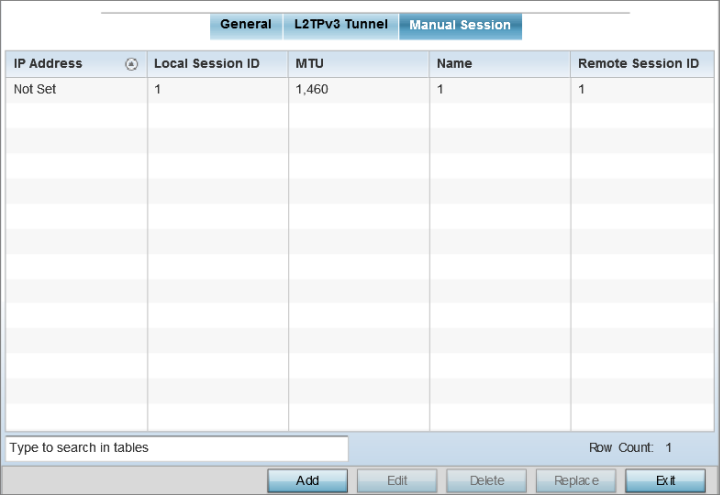After a successful tunnel connection and establishment, individual sessions can be created. Each session is a single data stream. After successful session establishment, data corresponding to that session (pseudowire) can be transferred. If a session is down, the pseudowire associated with it is shut down as well.
To define an L2TPv3 manual session configuration for a profile:
Select the Manual Session tab.

Refer to the following manual session configurations to determine whether one should be created or modified:
| IP Address |
Lists the IP address assigned as the local tunnel end point address, not the interface IP address. This IP is used as the tunnel source IP address. If this parameter is not specified, the source IP address is chosen automatically based on the tunnel peer IP address. This parameter is applicable when establishing the tunnel session and responding to incoming requests. |
| Local Session ID |
Displays the numeric identifier assigned to each listed tunnel session. This is the pseudowire ID for the session. This pseudowire ID is sent in a session establishment message to the L2TP peer. |
| MTU |
Displays each session‘s MTU. The MTU is the size (in bytes) of the largest protocol data unit the layer can pass between tunnel peers in this session. A larger MTU means processing fewer packets for the same amount of data. |
| Name |
Lists the name assigned to each listed manual session. |
| Remote Session ID |
Lists the remote session ID passed in the establishment of the tunnel session. |
Select Add to create a new manual session, Edit to modify an existing session configuration or Delete to remove a selected manual session.